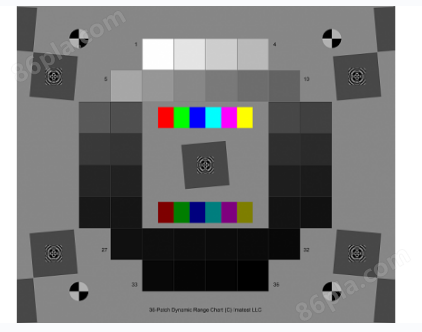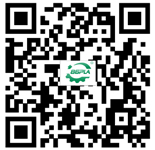該圖具有36個低噪聲密度片,密度梯度為大約0.1,密度最小3.2(從基底到基底的密度+3.1最小)。 接近圓形的貼片布置確保漸暈對結果具有最小的影響。 將提供具有實際密度的CSV參考文件。 該圖卡在設計在203×254mm(8×10英寸)的膠片上具有197×235mm(7.75×9.25英寸)的有效面積。
圖卡包含中心和角落的斜邊比例為4:1用于測量MTF值。它還包含在中心和角落的傾斜邊緣與4:1對比度測量MTF。邊緣具有MTF50≥16周/mm,這比良好噴墨圖卡好約3倍。 定位標記使得區域容易選擇。中性灰色背景有助于確保圖卡在自動曝光相機中曝光良好(與具有黑色背景的圖卡相比,黑色背景圖卡有時會過度曝光)。
它支持Stepchart,Multicharts,Multitest,如果有多個手動曝光,可以與動態范圍后處理器一起使用。Dmax> = 3.4足以用于具有小像素尺寸的相機手機和數碼相機,但是DSLR通常具有較高的動態范圍(以及手動曝光),這使得它們更適合于高動態范圍卡。
該圖表采用高精度LVT膠片記錄過程,以獲得良好的密度范圍,低噪聲和精細細節。
Details
This chart has 36 low-noise density patches with density steps of approximately 0.1, for a density range of at least 3.2 (density from base to base + 3.1 minimum). A nearly circular patch arrangement ensures that vignetting has minimal effect on results. A CSV reference file with actual densities will be supplied. The chart has an active area of 197x235 mm (7.75x9.25 inches) on 203x254 mm (8x10 inch) film.
It also contains slanted edges in the center and corners with 4:1 contrast for measuring MTF. The edges have an MTF50 >= 16 cycles/mm, which is about 3 times better than the best inkjet charts. Registration marks make the regions easy to select. A neutral gray background helps ensure that the chart will be well-exposed in auto exposure cameras (compared to charts with black backgrounds, which are sometimes strongly overexposed).
It is supported by Stepchart, Multicharts, Multitest and can be used with the Dynamic Range postprocessor if several manual exposures are available. Dmax >= 3.4 is sufficient for camera phones and digital cameras with small pixel sizes, but high-end DSLRs generally have higher dynamic ranges (and also manual exposure), which makes them well suited for Dynamic Range.
This chart is produced with a high-precision LVT film recording process for the best possible density range, low noise, and fine detail.
LVT Targets with reference files are guaranteed to remain accurate for one year from first use. After this time the targets can be returned for re-calibration and will be returned with a new reference file.

















